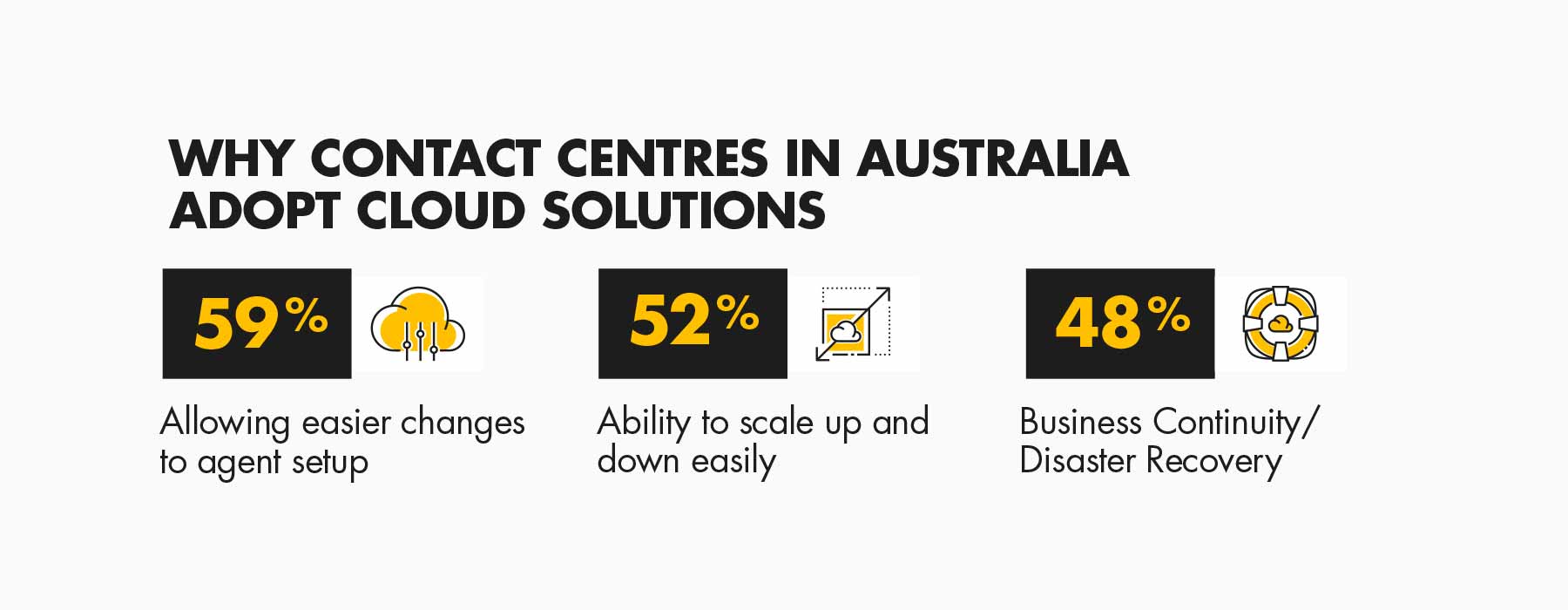
At the time of its conception, ‘the cloud’ challenged people with its abstract tangibility. Who would have predicted that fifteen years later almost all new technologies implemented into organisations would have cloud as their pillar?
The adoption of cloud solutions is the first step towards Contact Centre modernisation. According to “Driving Contact Centre transformation eBook”, this year will see Contact Centres focusing on transformation to survive as customers expect more process efficiency and better customer experience.
Gone are the days of switchboards and corded communication, with 48% of Australian Contact Centres considering migration of legacy infrastructure to the cloud as a key priority to improving customer experience (CX).

What are the many great reasons to move your Contact Centre from on-prem to the cloud?
- Allow easier changes to agent set up
Changes that occur within a Contact Centre that impact agents and employment, particularly the hiring of new employees, are easy to implement within a cloud environment. There’s never been a better example of this in action than during the COVID-19 pandemic, where Contact Centres were required to rapidly move their agents from physically working in their headquarters to working from home. A cloud Contact Centre provides geographic freedom. - Ability to scale up and down easily
Contact Centres are faced with constant change based on incoming customer demands and call volume. Shifting from to the cloud provides Contact Centres with the ability to scale up and down and upgrade based on requirements. Having assets that can quickly respond to these changes enables centres to capitalise on opportunities and grow at a comfortable pace. - Business continuity / disaster recovery
Research by Ecosystem found that one of the main reasons that customer experience leaders choose to adopt cloud Contact Centre solutions is to migrate disaster recovery risks and provide more options for improved business continuity planning. Legacy infrastructure can be easily impacted in the event of theft, damage or natural disaster, and the threat of losing vital data and information is real. Transitioning from legacy to the cloud, ensures that important information stored is secure and protected from the unpredictable.
As you start exploring the cloud model for your Contact Centre, consider these six steps to get started:
- Move agents to the cloud in small clusters for the basic calling, routing, outbound, email and chat functionalities
- As you start seeing the benefits of speed and agility, start adding digital channels
- Explore adding machine learning and Artificial Intelligence (AI) and test the capabilities
- Review how you can scale dynamically and make changes to channels without intervention from IT
- Integrate Workforce Experience Management solutions
- Take advantage of open APIs in the cloud. Use the APIs to build integrations, custom interfaces, or embedded functionality from other applications
Take your Contact Centre operations to the next level by migrating to the cloud, but always remember to partner with a Managed Service Provider (MSP) that aligns with your business values. Work with a MSP that can support a holistic CX vision and can help take your business operations to the next level.
Their expertise should not be limited to Contact Centres, but should also be across managed and hosted services, digital services, security, cloud, and data centre services.
For more information on how these recommendations will inform your Contact Centre in 2021, download our latest eBook here.